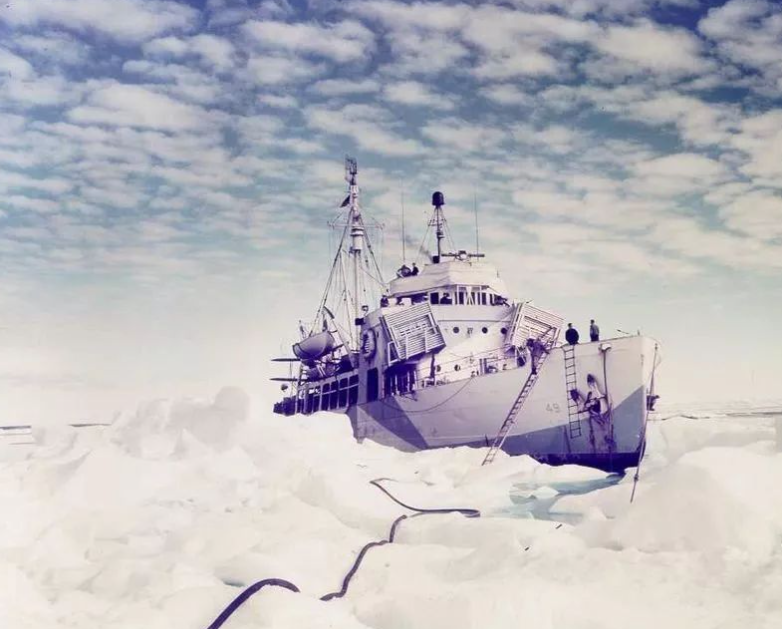Greenland, often dubbed the “land of ice and snow,” is much more than just a picturesque destination for tourists. While many people may associate it with the elusive auroras or the striking landscape of glaciers and icebergs, Greenland’s history and contemporary challenges reveal a much deeper narrative. Let’s take a closer look at this remote island that has captured global attention, not just for its natural beauty, but for its political and cultural significance.

The Story Behind Greenland’s Appeal
Greenland is often mentioned alongside destinations like Iceland when it comes to viewing the mesmerizing northern lights. However, it’s also known for its rugged terrain, dog sledding, and the ancient igloos of the Inuit people. But how many actually associate these iconic elements with Greenland? For most, the island remains a mysterious and remote place that only pops up in textbooks or occasionally in headlines. The question remains: why has Greenland become so interesting, especially to figures like former U.S. President Donald Trump?
Trump’s Greenland Ambition: The Land of Opportunity?
Despite Greenland’s remote location and harsh climate, it holds immense geographical and economic importance. With an area of over 2 million square kilometers, it is an enormous landmass, larger than many countries in Europe. While Denmark, Greenland’s sovereign state, is a small country by size, Greenland’s vast expanse could significantly alter the global geopolitical landscape.
The idea of purchasing Greenland wasn’t as far-fetched as it seemed at first glance. In fact, Trump’s interest in acquiring the island mirrors historical attempts to seize strategically valuable territories, such as the purchase of Alaska in 1867. Greenland is rich in resources like rare-earth minerals, and as the ice melts, its Arctic shipping routes are opening up. In essence, Greenland could become a crucial player in future global trade.
A Historical Perspective: From Vikings to Modern Day
Greenland’s modern history is tied to the Vikings. In 982 AD, Erik the Red, a banished Icelandic Viking, discovered the island. His arrival marked the beginning of European interest in this “Greenland” (a name that belies the island’s icy reality). By the 13th century, Greenland was a colony of Norway, and after Norway’s union with Denmark, it eventually became a Danish possession.
Even as Greenland became a colony, its inhabitants, primarily Inuit peoples who had migrated from Siberia, maintained their own unique culture and lifestyle. However, the island’s political status has always been complicated. It was only in 1979 that Greenland gained home rule, and in 2009, it achieved further autonomy, with its own parliament and official language, Greenlandic.
Greenland’s Unique Culture and Identity
Despite ongoing struggles for independence, Greenland is deeply proud of its unique cultural heritage. The Inuit, who were the island’s first inhabitants, continue to shape the island’s cultural identity. From traditional hunting practices to vibrant mask dances, their customs remain an integral part of Greenland’s cultural fabric.
However, the introduction of Western influences, such as the Roman Catholic Church, European legal systems, and modern industrial practices, has led to a fusion of ancient traditions with modern life. Football fields, Danish language, and modern consumer goods now coexist with the ancient rhythms of Greenlandic life. The island’s residents are in the process of balancing their indigenous identity with the demands of a rapidly modernizing world.
Greenland’s Struggles: A Remote Island with Big Issues
Living in Greenland is not as idyllic as some may think. While the island’s stunning natural beauty and fascinating wildlife attract tourists, the reality of life on the island is more challenging. The long, dark winters, with extended periods of polar night, contribute to high rates of depression and suicide. With no connecting roads between towns, the residents face isolation and difficulty in accessing basic services.
The island’s primary economy relies on fishing, hunting, and a small tourism industry. Despite recent developments, Greenland remains largely dependent on subsidies from Denmark. This dependency, combined with the challenges posed by climate change and a rapidly shrinking ice cover, means that Greenland’s residents are facing an uncertain future.
Greenland’s Role in Global Politics: A Strategic Chess Piece?
As the world grapples with climate change, the melting ice in the Arctic is opening up new shipping routes and access to resources that were once locked away. Greenland’s location makes it a key player in the race for Arctic dominance. As countries like the U.S. and Russia seek to secure their influence in the region, Greenland is positioned at the crossroads of international geopolitics.
For many, Greenland will continue to be a place of mystery and allure. For others, it will remain a critical point of strategic interest. As the ice melts and the world’s focus shifts northward, Greenland will inevitably become more entangled in the global power struggle.
Conclusion: Greenland – More Than Just a Tourist Destination
While many see Greenland as nothing more than a frozen paradise for tourists seeking the northern lights or the thrill of dog sledding, the island’s deeper story is one of cultural pride, political maneuvering, and environmental change. The Inuit people’s struggle to maintain their identity in the face of outside influences, combined with the growing interest in Greenland’s resources, makes it an island of both immense opportunity and immense challenge.
For now, Greenland remains a land of extremes, but its future could be shaped by the forces of global politics, environmental change, and the pursuit of resources. Whether it will continue to be a dream destination for tourists or a pivotal player on the world stage remains to be seen.

No comments yet.